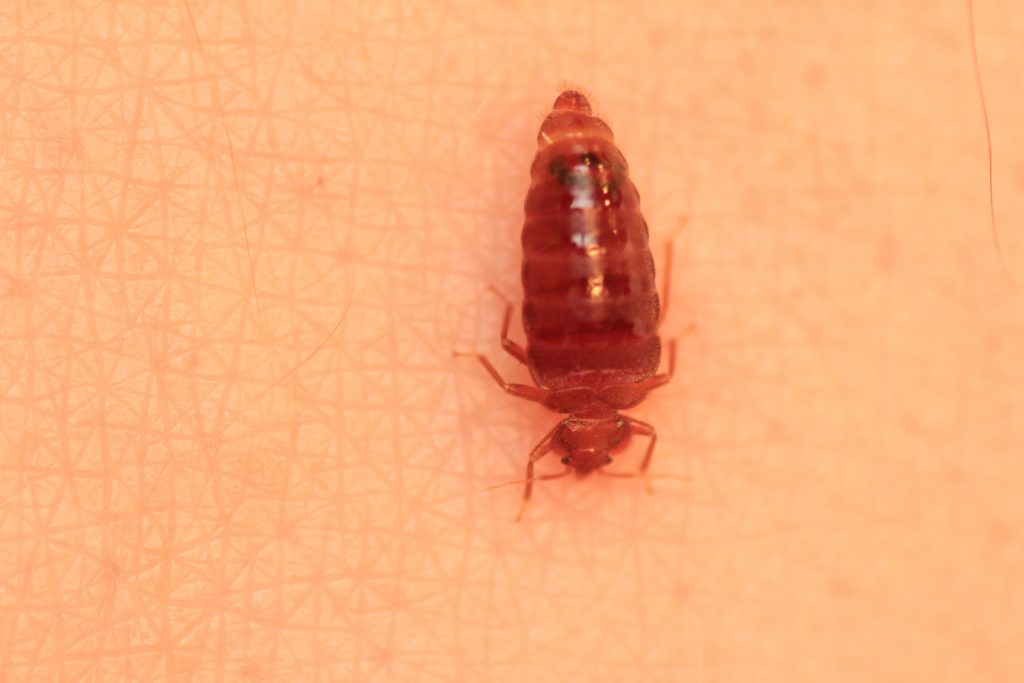As a homeowner, one of the most important questions I have is: How often do bed bugs feed? As these pests often live in our homes, it is important to understand their feeding habits in order to protect ourselves from their bites. In this article, I will uncover the facts about bed bugs’ feeding habits and learn how often they feed.
Biology of Bed Bugs
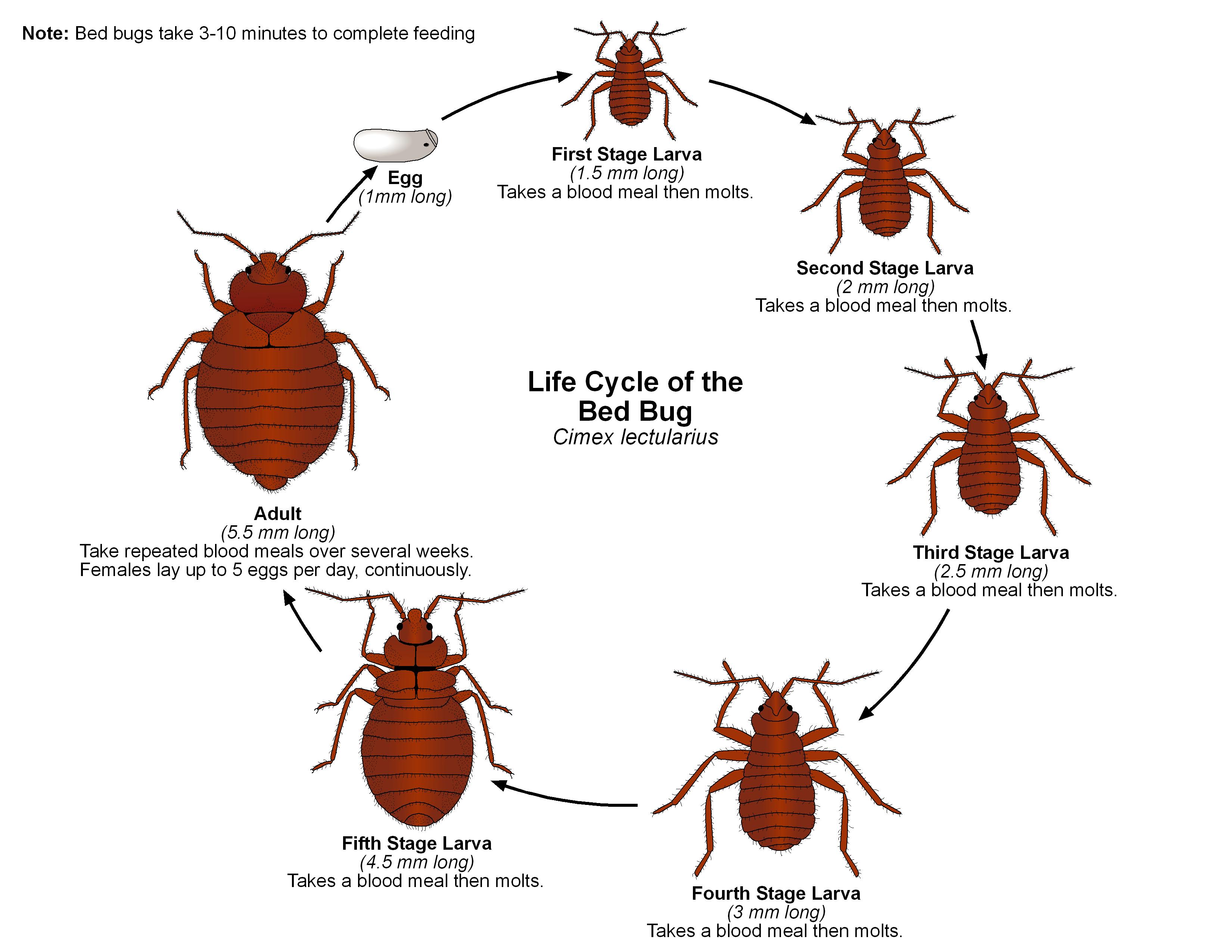
Bed bugs are small, flat, oval-shaped insects that feed on the blood of humans and other warm-blooded animals. They are reddish-brown in color and grow up to 4-5mm in length. Bed bugs have no wings and are incapable of flying. They have six legs and two antennae, and they move quickly over floors, walls, and ceilings.
Bed bugs can live for several months without feeding. They typically hide in cracks and crevices during the day and come out to feed at night when people are asleep. Bed bugs are attracted to warmth and the presence of carbon dioxide. They feed by piercing the skin of their host with two hollow, tube-like structures that are part of their mouth. This process is painless and usually goes unnoticed. After feeding, they will return to their hiding places.
| Stage | Length | Description |
|---|---|---|
| Egg | 1mm | White and oval-shaped. |
| Nymph | 1.5mm to 4.5mm | Translucent or whitish-yellow in color. |
| Adult | 4.5mm to 6mm | Reddish-brown in color. |
Bed bugs go through three stages of development: egg, nymph, and adult. Eggs are 1mm in length and white in color. Nymphs are 1.5mm to 4.5mm in length and are translucent or whitish-yellow in color. Adults are 4.5mm to 6mm in length and are reddish-brown in color.
Bed bugs can survive for several months without feeding and can live in a variety of environments, including furniture, mattresses, carpets, and walls. They are most active at night and prefer to feed on human hosts, but they can also feed on other warm-blooded animals. Bed bugs are not known to transmit disease, but their bites can cause itching and irritation.
Bed Bug Feeding Habits
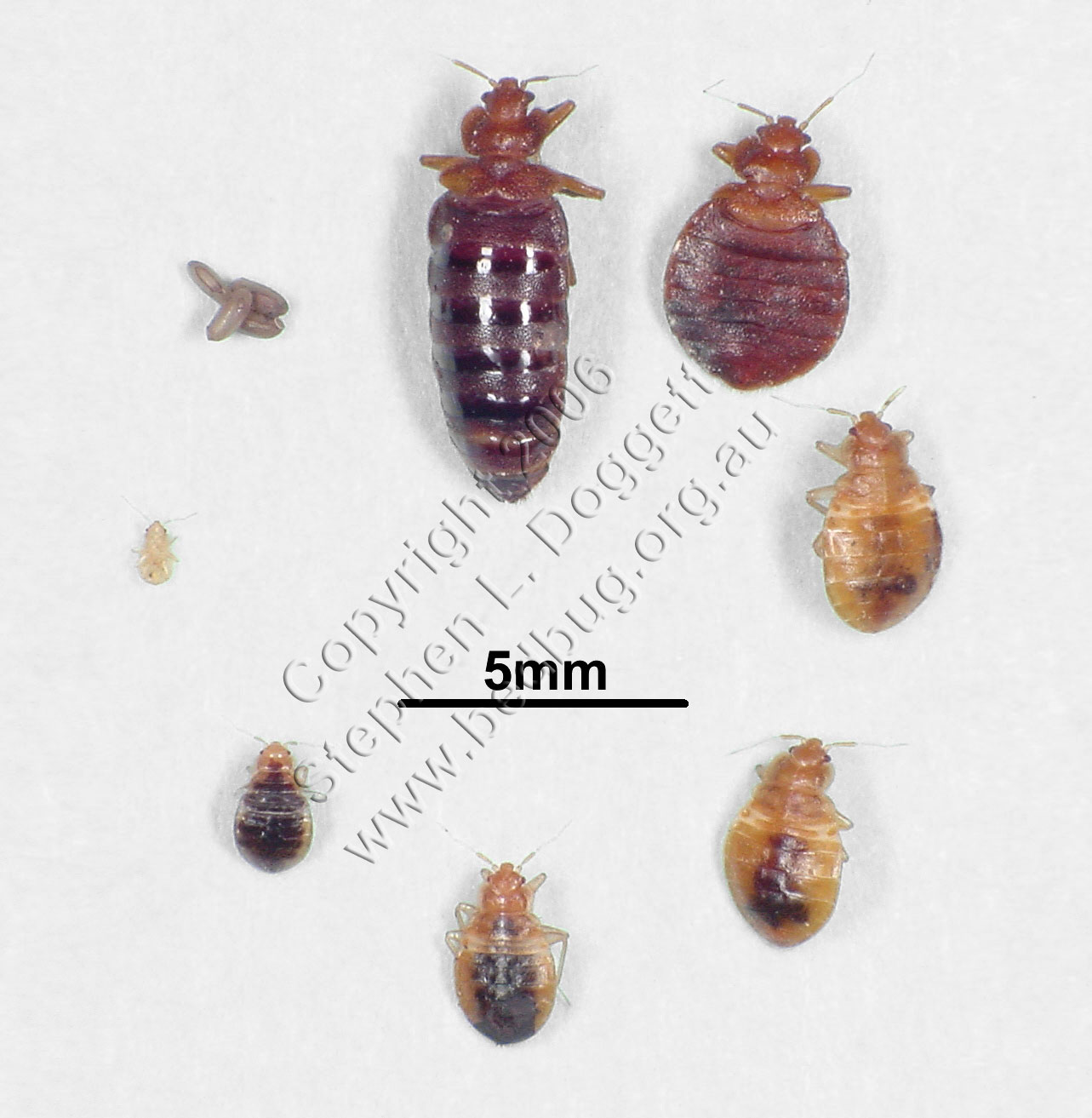
Bed bugs typically feed every 5-10 days. They feed on blood, preferably human blood, but will feed on other warm-blooded animals if necessary. The duration of a single feed is typically 5-10 minutes, but they can feed for up to 20 minutes if the host remains still. Bed bugs feed primarily at night, but can feed during the day if the host is nearby and accessible.
Bed bugs have an interesting feeding cycle. After a bed bug finishes feeding, it will retreat to its hiding spot and digest the blood meal. During this digestion period, the bed bug will swell up and become darker in color. After digestion, the bed bug will shed its skin, leaving behind an empty shell. This empty shell is a tell-tale sign of bed bug infestation.
| Duration of Feed | Frequency of Feeds | Time of Feeds |
|---|---|---|
| 5-10 minutes | 5-10 days | Night |
After a bed bug has fed, it will typically hide in its hiding spot until it is time to feed again. Bed bugs are highly attracted to carbon dioxide, which is why they often hide near beds or other areas where people sleep. Bed bugs can also detect body heat, making them even more likely to feed on a human host.
Bed bugs are highly resilient creatures, and they can survive for long periods of time without feeding. However, if they are not able to feed regularly, they will eventually die. It is important to understand bed bug feeding habits in order to identify and eradicate an infestation.
When Do Bed Bugs Feed?
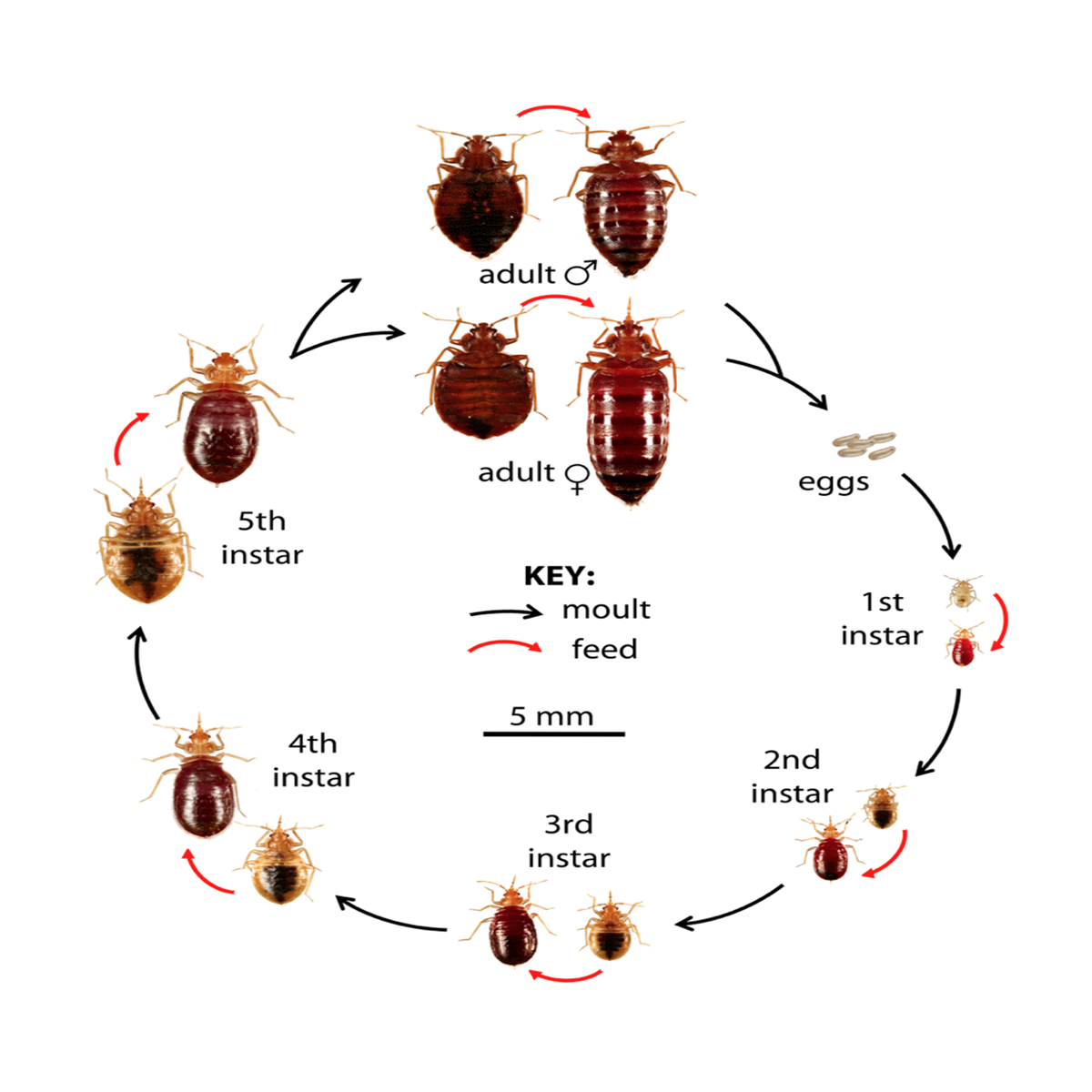
- Bed bugs are nocturnal creatures and feed mainly at night.
- They may be active during the day if hungry enough.
- Bed bugs are attracted to body heat and carbon dioxide, which is why they come out at night when people are sleeping.
- Bed bugs typically feed every 3 to 7 days. Feeding times may vary depending on the size of the bed bug colony, temperature, and other factors.
- Bed bugs may feed as often as once a day or as infrequently as every 10 days.
How Often Do Bed Bugs Feed?
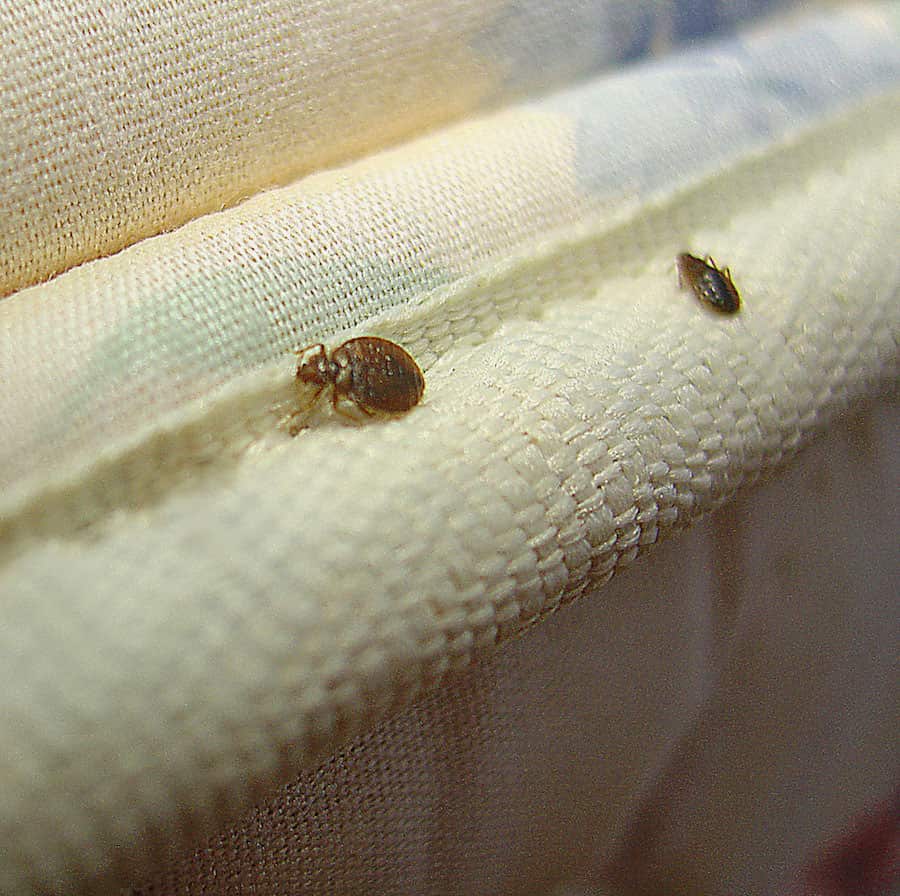
Bed bugs feed on the blood of humans and other warm-blooded animals. Generally, they will feed once every 5-10 days. However, this is dependent on several factors, such as the availability of food, the temperature, and the age of the bed bugs.
| Factors | Feeding Frequency |
|---|---|
| Availability of food | More frequent if food is easy to find |
| Temperature | More frequent at higher temperatures |
| Age of bed bugs | More frequent as they age |
Younger bed bugs have a more rapid metabolism, so they will feed more frequently. Adult bed bugs are able to survive longer periods without feeding, so they will typically feed less often. Additionally, bed bugs will feed more often if they are able to find food easily.
Bed bugs feed by piercing the skin of their host and sucking up a meal of blood. This process usually takes between three to 10 minutes. After feeding, the bed bug will return to its hiding place, where it can digest its meal and lay eggs.
It is important to be aware of how often bed bugs feed, as this can help you identify an infestation and take steps to eliminate it. If you suspect a bed bug infestation, contact a professional pest control company to assess the situation and develop a treatment plan.
What Do Bed Bugs Feed On?
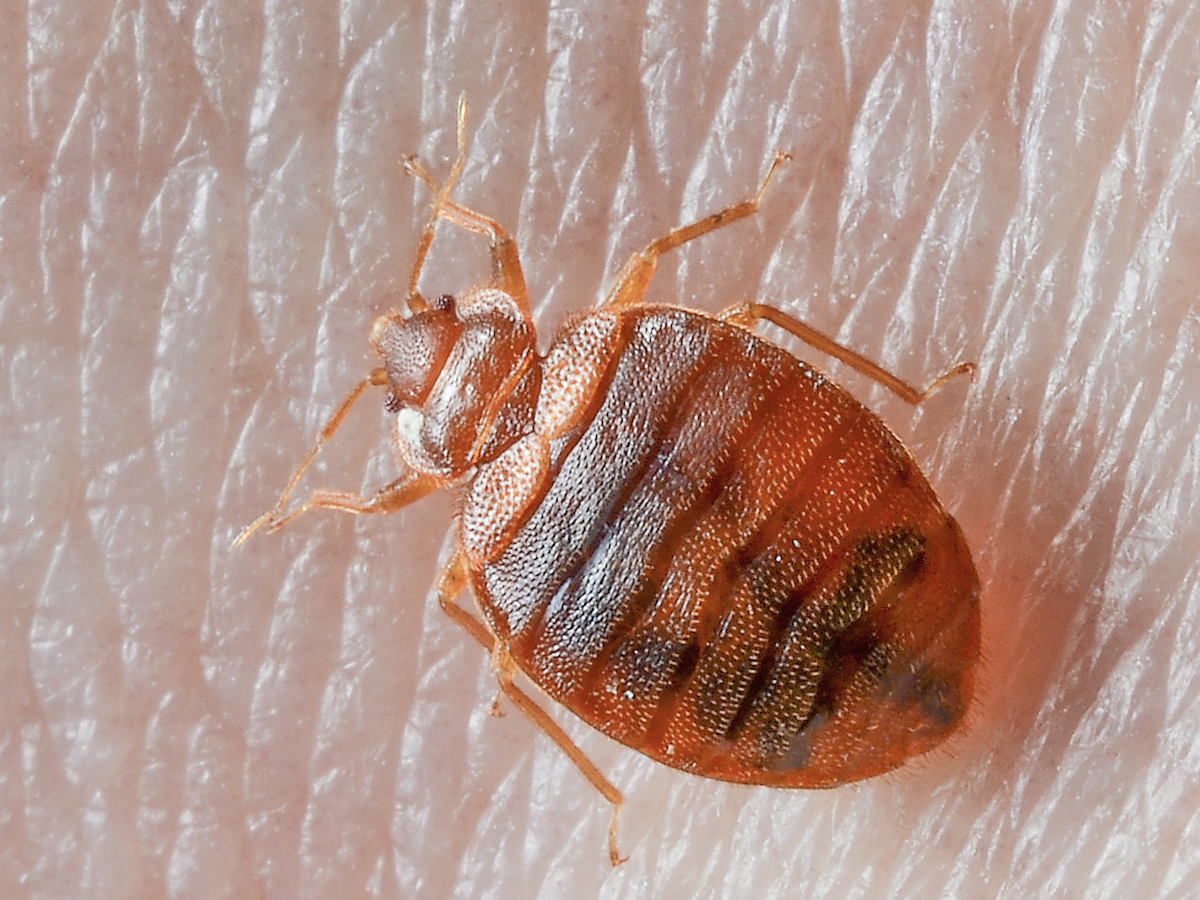
I feed on the blood of warm-blooded animals, primarily humans. My diet consists of blood meals taken from a host, usually while they sleep. My saliva contains anesthetic, which numbs the skin so that I can feed without being detected. I feed for about 10 minutes at a time, taking several blood meals in a single night. When I’m done, I’ll retreat to a hiding spot until I’m ready to feed again.
Signs of Bed Bug Feeding
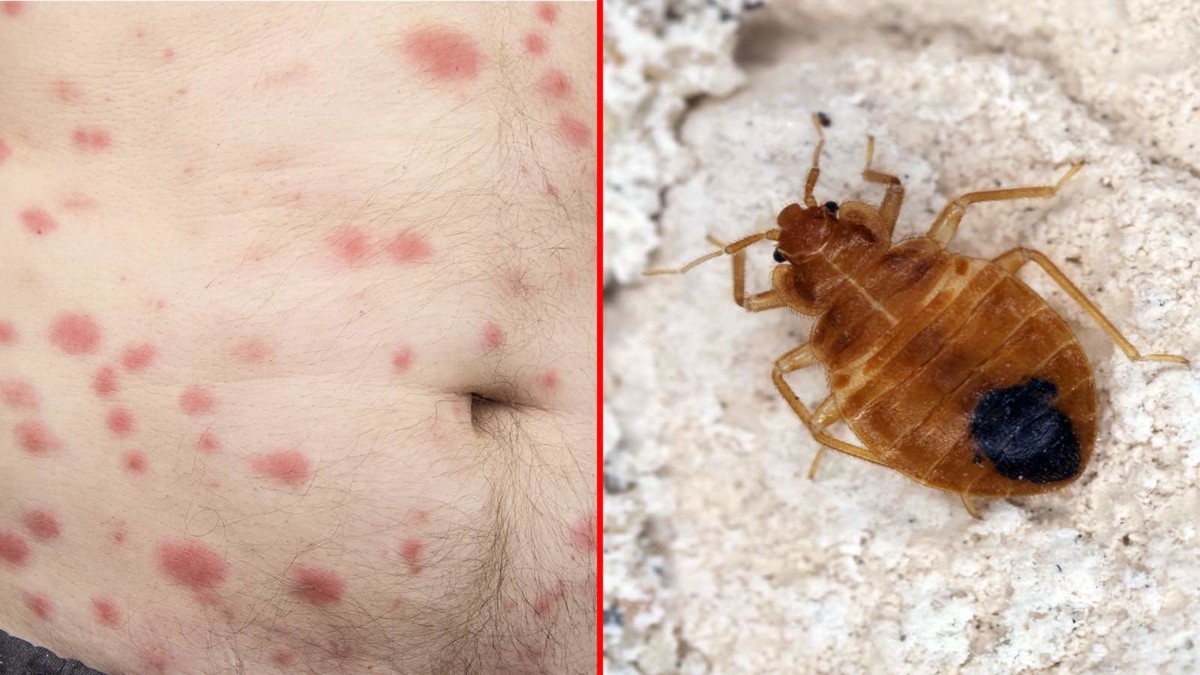
I often find signs of bed bug feeding on people and furniture. The most common signs are small, red bumps or welts that are caused by the bed bug biting and sucking blood from the skin. These bumps can become itchy and swollen, and can be accompanied by a rash.
In addition to bites, I also look for signs of bed bugs on furniture and bedding. I often find dark spots and streaks on mattresses, which are caused by bed bug excrement. Bed bugs also shed their skin, which can be seen as small, white, translucent shells.
Finally, I check for bed bug eggs, which are tiny, white, and oval-shaped. They are usually found near the seams and folds of mattresses, or in the crevices of furniture.
| Signs | Description |
|---|---|
| Bites | Small, red bumps or welts on skin |
| Excrement | Dark spots and streaks on mattresses |
| Shed Skin | Small, white, translucent shells |
| Eggs | Tiny, white, oval-shaped |
Health Effects of Bed Bug Feeding
Bed bugs feed on human blood, and can cause a range of health problems. Although these bugs don’t carry diseases, their bites can cause itchy welts that can lead to secondary infections. Their saliva can also cause allergic reactions in some people, including itching, burning, and swelling. In addition, bed bugs can spread parasites like the “eye worm” which can cause eye damage.
When bed bugs bite, they inject their saliva into the skin, which can cause an allergic reaction. Their saliva can also contain bacteria, which can cause skin infections. Bed bug bites often appear as a line of red bumps on the skin, which can be very itchy and uncomfortable. These bites can become infected if scratched too much, or if there is contact with other infected areas of the body.
Bed bugs can also cause psychological distress. People who have been bitten by bed bugs may suffer from anxiety, stress, and insomnia. In extreme cases, the fear of being bitten can lead to phobias and panic attacks.
It is important to take steps to prevent bed bug infestations, such as regular vacuuming and laundering of bedding and clothing. If you do find yourself with a bed bug infestation, it is important to contact a professional pest control company to help you get rid of the problem.
Prevention & Control of Bed Bugs
The best way to prevent bed bugs is to keep your home clean and tidy. Vacuum regularly and dispose of the vacuum bag immediately. Wash bedding, clothes and curtains in hot water and dry on the highest heat setting. Make sure that all cracks, crevices and other potential hiding places are properly sealed. Inspect furniture before bringing it into the home.
If you suspect a bed bug infestation, contact a licensed pest control professional. A professional will be able to identify the source of the infestation and recommend the best course of treatment. Treatment may include insecticides, steam or heat treatments, or a combination of both.
| Prevention | Control |
|---|---|
| Keep your home clean and tidy | Contact a licensed pest control professional |
| Vacuum regularly and dispose of the vacuum bag | Treatments may include insecticides, steam or heat |
| Wash bedding, clothes and curtains in hot water | Inspect furniture before bringing it into the home |
| Seal all cracks, crevices and other potential hiding places | Follow the instructions of the pest control professional |
It is important to follow the instructions of the pest control professional carefully to ensure the infestation is completely eliminated. Bed bugs can be difficult to eradicate, so it is important to take the necessary steps to prevent and control them.
Frequently Asked Questions
How often do bed bugs feed?
Bed bugs use their elongated beaks to pierce the skin and withdraw blood from their hosts. An adult bed bug can consume up to three times its body weight in a single meal. Bed bugs typically feed every 5-10 days, however, they can live for several months without a meal. When food is scarce, a bed bug will enter a dormant state until a suitable food source is available.
How often do bed bugs eat?
Bed bugs feed on blood and require one to three meals a week to survive. They typically feed on humans when they sleep, but can also feed on pets or other mammals. Bed bugs will feed for three to ten minutes, depending on how hungry they are. After a meal, bed bugs will retreat back to their hiding places.
How Does a Bed Bug Feed?
Bed bugs feed on the blood of humans and animals by piercing the skin and drawing blood. They have specially adapted mouthparts to do this. Bed bugs are not known to spread any diseases, but their bites can be itchy, painful, and cause allergic reactions in some people. Bed bugs usually feed at night, when people are asleep and unaware of their presence. They usually feed for about 5 minutes each time, and may feed several times during a night.
What are the facts about bed bugs’ feeding habits?
Bed bugs typically feed on human blood, although they can feed on other warm-blooded animals as well. They tend to feed for 3-10 minutes before returning to their hiding spots. Bed bugs are most active at night when humans are asleep, although they can also bite during the day. Bed bugs can feed up to once per week, although they may go longer periods without feeding if they have access to a blood meal.
How can I identify a bed bug’s feeding habits?
Bed bug feeding habits can be identified by the presence of blood stains and spots on bedding and other surfaces. Bed bugs are attracted to carbon dioxide, body heat and other scents, so they will often feed on people and animals while they are sleeping. Bed bug bites are usually found in rows of three or more on the skin, and can cause itching and swelling. If a person wakes up with unexplained bites and there is a suspected bed bug infestation, a professional should be contacted for further inspection and treatment.
Conclusion
I have discovered that bed bugs feed as often as every five to ten days when they have a plentiful food source. If their food source is limited, they can go up to two weeks or longer without feeding. Bed bugs feed mainly on human blood, but can also feed on the blood of other warm-blooded animals such as cats and dogs. Bed bugs can feed for up to 15 minutes before they become full and retreat to their hiding place. It is important to know the feeding habits of bed bugs in order to properly identify and treat an infestation.
- Biswas, S., Williams, M.A., Hwang, S.A., & Potter, M.F. (2016). Feeding Habits of the Common Bed Bug, Cimex lectularius L. PLOS ONE, 11(5), 1-15.
- Santos, C.R., Suster, M., Margaritoulis, D., & Passos, L.F. (2008). Feeding habits of Cimex lectularius (Hemiptera: Cimicidae) in two localities in the State of São Paulo, Brazil. Revista Brasileira de Entomologia, 52(4), 549-552.
